Minsk is the capital and largest city of Belarus. Belarus is a former republic of the Soviet Union, gaining its independence on August 25, 1991, following the dissolution of the USSR.
Belarus, known formally as the Republic of Belarus, is a landlocked country situated in Eastern Europe. It shares borders with Russia to the east and northeast, Ukraine to the south, Poland to the west, and Lithuania and Latvia to the northwest.
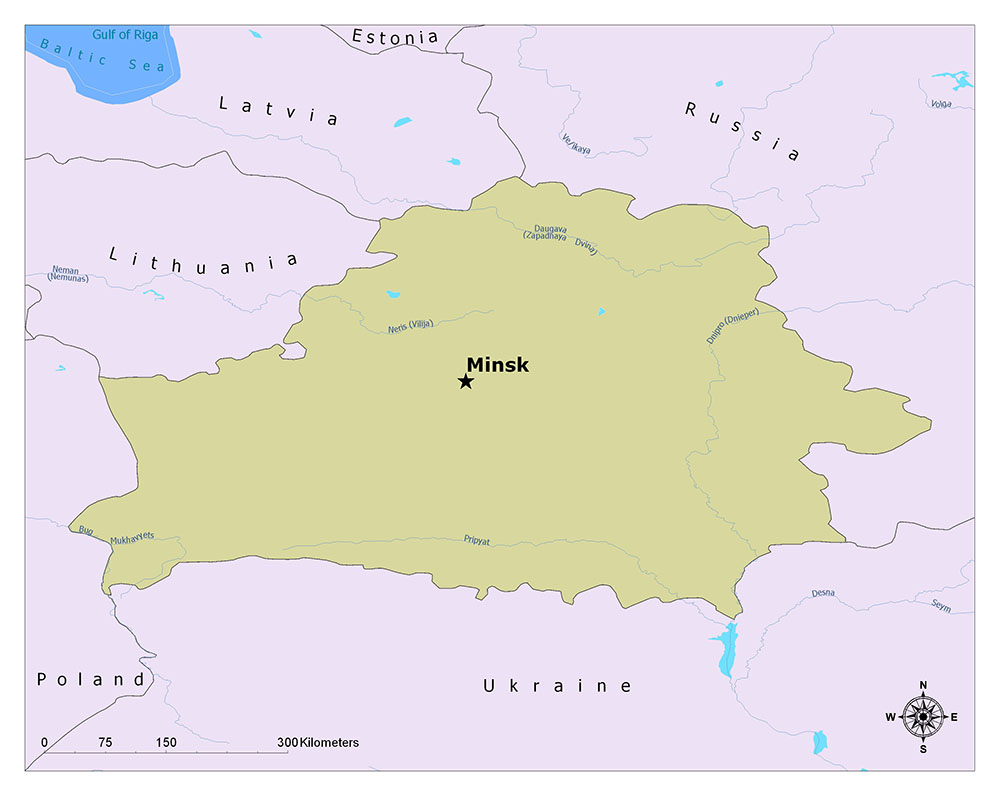
Where is Minsk?
It is located on the southeastern slope of the Minsk Hills, near the geographic center of the country. As the national capital, Minsk has a special administrative status in Belarus and is the administrative center of Minsk Region and Minsk District.
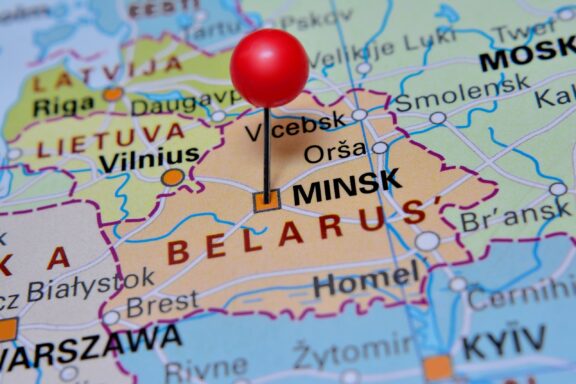
History of Minsk
Minsk officially became the capital of the Byelorussian Soviet Socialist Republic (BSSR) in 1919 after the Russian Soviet Federative Socialist Republic recognized the BSSR’s sovereignty. The city retained its status as the capital after the BSSR became the independent Republic of Belarus in 1991, following the dissolution of the Soviet Union.
Minsk has a long and complex history dating back to the 11th century. It was first mentioned in chronicles in 1067, in a context related to the Battle of the Nemiga River. Minsk initially developed as part of the Principality of Polotsk, an early East Slavic state, but later came under the influence of the Grand Duchy of Lithuania and then the Polish-Lithuanian Commonwealth.
In the late 18th century, as a result of the partitions of Poland, Minsk became part of the Russian Empire. The city experienced significant growth and modernization in the 19th century, especially after it became connected to the railway network.
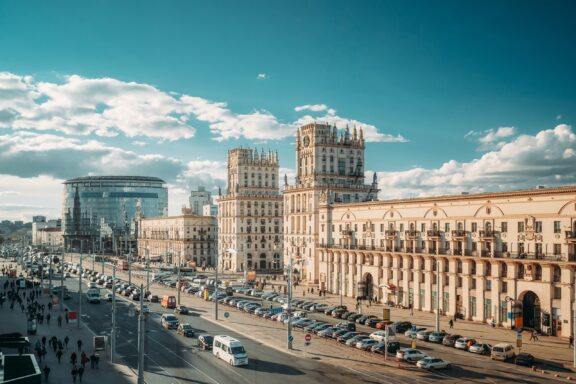
During the early 20th century, Minsk changed hands multiple times amidst the turmoil of World War I and the Russian Revolution. It was briefly the capital of the Belarusian People’s Republic in 1918 before becoming part of Soviet Belarus.
Under Soviet rule, Minsk underwent extensive development and became a major industrial center. However, the city was heavily damaged during World War II. Post-war, it was rebuilt with a focus on Stalinist architecture, much of which still dominates its cityscape. When the Soviet Union collapsed in 1991, Minsk became the capital of the newly independent Republic of Belarus.
Features of Minsk
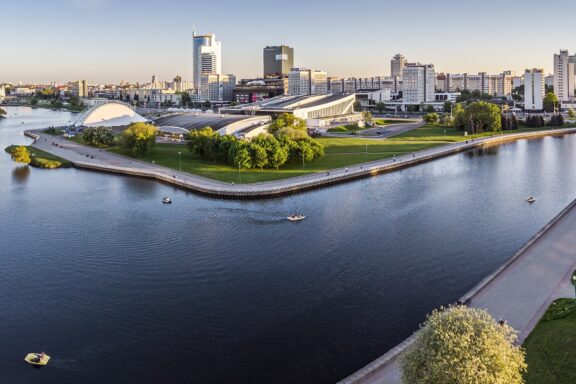
Geography and Climate
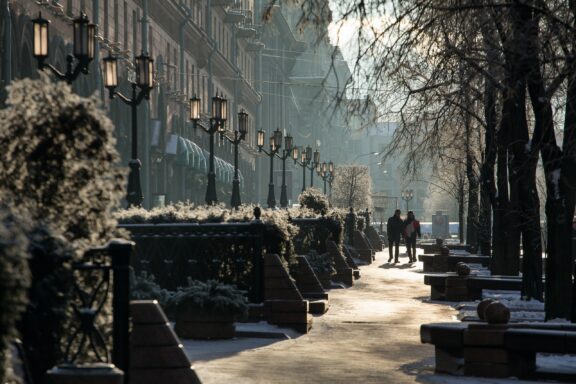
Geographically, Minsk lies in a transitional zone between mixed and broad-leaved forests. The city’s landscapes are primarily flat, though slightly hilly due to the Minsk Hills. The Svislach River runs through the city, contributing to its diverse flora and fauna.
Minsk has a humid continental climate. Summers are warm, typically peaking around 24-25°C (75-77°F) in July, while winters are cold and snowy, with temperatures in January often dipping below -5°C (23°F). Spring and autumn are relatively mild but can be unpredictable.
Population
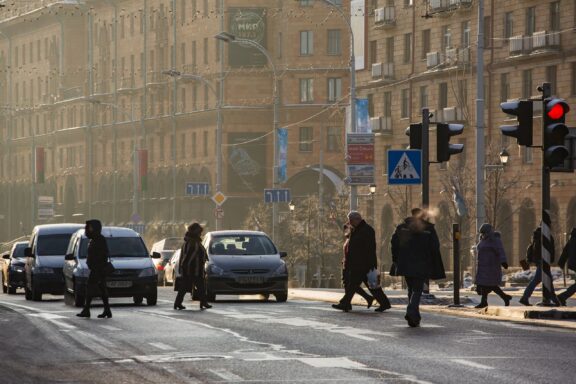
Minsk’s population is around 2 million people, making it the most populous city in Belarus. The majority of residents are ethnic Belarusians, with sizable Russian, Ukrainian, and Polish communities as well. The primary languages spoken are Belarusian and Russian.
Economy
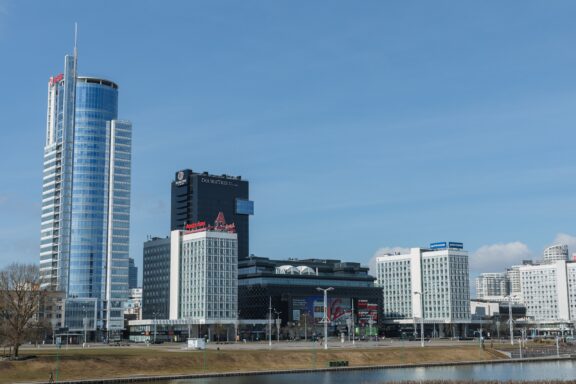
Minsk is the economic heart of Belarus, contributing significantly to the country’s GDP. The city’s economy is primarily based on industry and services.
Significant industries include mechanical engineering and manufacturing – especially tractors and heavy machinery – food processing, and electronics manufacturing. Information technology, financial services, and retail are prominent in the services sector.
Things to Do and Places to See in Minsk
Minsk boasts an array of engaging activities and remarkable sites. Let’s explore some of the city’s most sought-after attractions and destinations:
1. Belarusian State Museum of the History of the Great Patriotic War
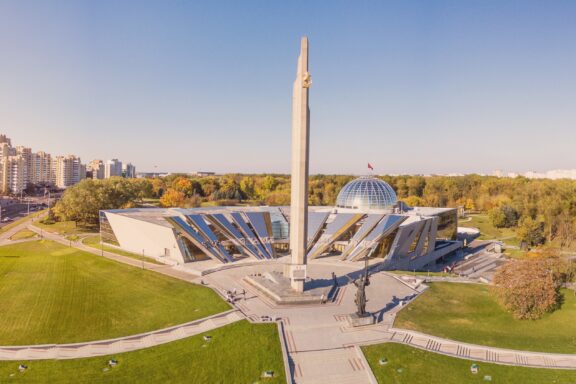
This museum in Minsk, Belarus, is one of the world’s largest museums dedicated to World War II, known as the Great Patriotic War in former Soviet Union countries. It features more than 140,000 artifacts, including weapons, uniforms, and vehicles, as well as extensive exhibitions detailing the experiences of the Belarusian people during the war. The museum was established in 1944, making it the first World War II museum established during the conflict.
2. Victory Park
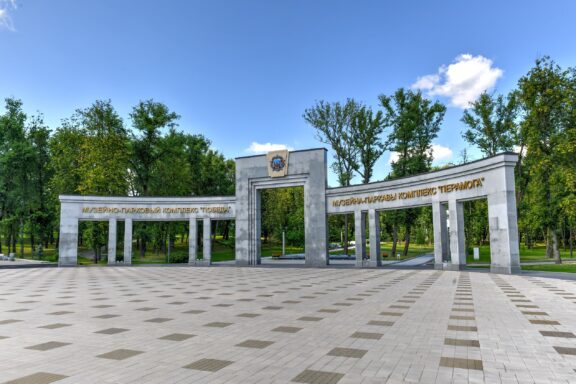
Victory Park, also known as Park Pieramohi, is one of the largest parks in Minsk, situated on the Svislach River. The park was opened in 1985 to commemorate the 40th anniversary of the end of World War II. It includes a picturesque lake, biking, and rollerblading trails and is famous for outdoor activities. The park is also home to a War Museum and the Island of Tears, a memorial dedicated to the Belarusian soldiers who died in the Afghan war.
3. Belarusian National Arts Museum
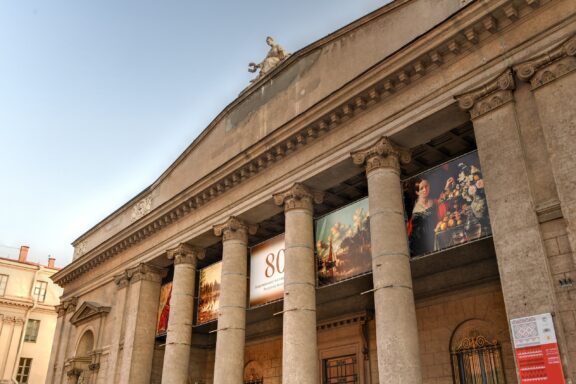
The Belarusian National Arts Museum is the largest in the country, with over 30,000 works of art in its collection. It includes Belarusian and international art from the Middle Ages to the present day. The museum was founded in 1939 and hosts several temporary exhibitions annually.
4. Church of Saints Simon and Helena
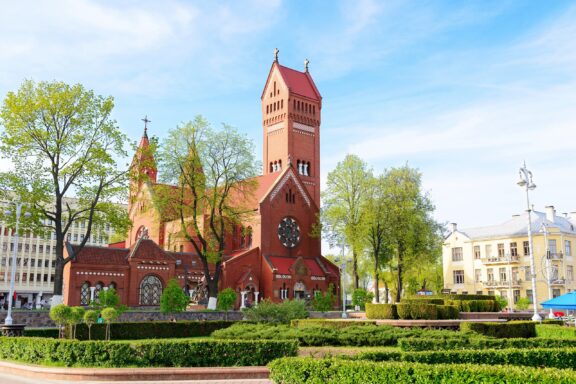
Also known as the Red Church, this Roman Catholic church is one of the most recognizable landmarks in Minsk. The church was built between 1905 and 1910 and is named after the children of its patrons, who died young and are commemorated by statues on the church’s grounds. Its distinctive red brick construction stands out in the cityscape.
5. National Academic Bolshoi Opera and Ballet Theatre
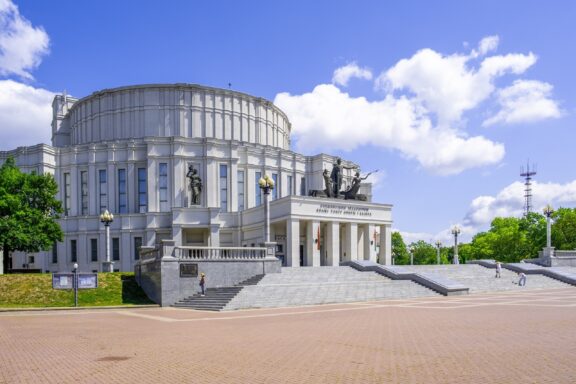
The National Academic Bolshoi Opera and Ballet Theatre of Belarus, located in Minsk, is a unique architectural monument of the first half of the 20th century, designed in Soviet Constructivism. It hosts a variety of performances, from classical opera and ballet to modern productions.
6. Park Horkaha
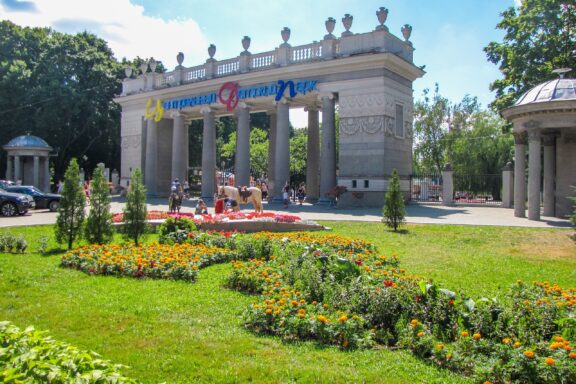
Park Horkaha, or Gorky Park, is a popular public park in Minsk, named after the famous Russian writer Maxim Gorky. This beautifully landscaped park has a variety of attractions, including an observatory, a Ferris wheel, and a variety of amusement rides. It’s a great place to enjoy a leisurely walk or a picnic, and families particularly love it.
Image Sources and Copyright Information
- Where-is-Minsk: © Mappr
- Map Pin Pointing to Minsk, Belarus: © JoaoCachapa/Shutterstock
- Minsk Railway Station Square and Gate Towers: © Grisha Bruev/Shutterstock
- Aerial View of Minsk Cityscape and River: © Mr Twister/Shutterstock
- Pedestrians Crossing Street in Minsk City Center: © Mazur Travel/Shutterstock
- Minsk Skyline with Modern Buildings: © Creative Nina/Shutterstock
- Aerial View of Belarusian Great Patriotic War Museum: © kaznadey/Shutterstock
- Triumphal Arch in Victory Park, Minsk: © Felix Lipov/Shutterstock
- Facade of the Belarusian National Arts Museum: © Felix Lipov/Shutterstock
- Red Brick Church with Twin Spires Surrounded by Greenery: © pamuk/Shutterstock
- Bolshoi Opera and Ballet Theater Exterior on a Sunny Day: © Greg Brave/Shutterstock
- Gorky Park Entrance in Minsk: © Diego Fiore/Shutterstock